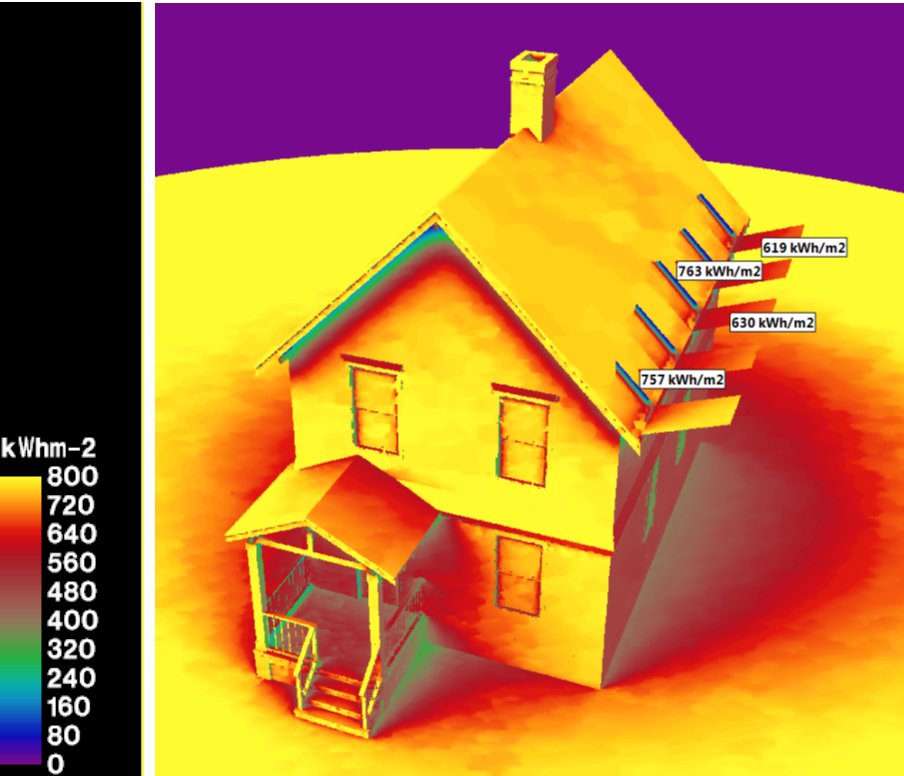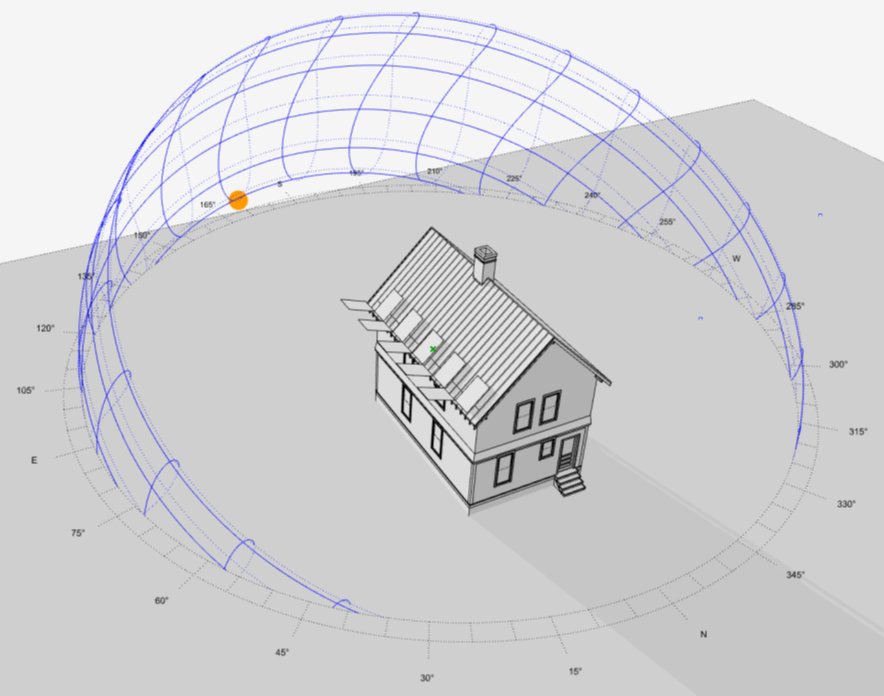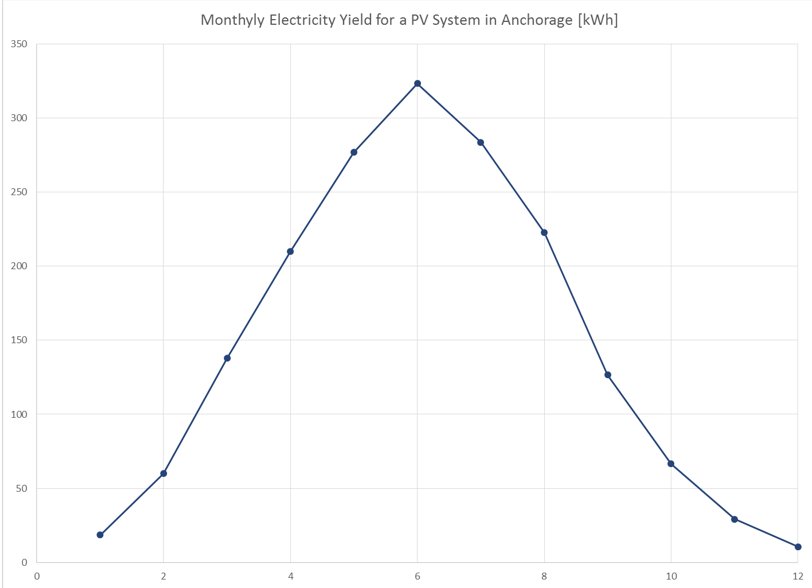Designing a PV system
Background Material: DH-II chapter 9 (upcoming)
1. PV system placement and preliminary electricity yield calculation Using radiation maps in DIVA4, visualize the annual solar radiation falling onto your panels and verify that no partial shading occurs on Dec 21st at noon. An example radiation for a single familiy home in Anchorage is shown below. Estimate the annual AC electricity gain assuming a cell efficiency of 16% and an inverter efficiency of 96%.
 |
 |
Radiation map of the “design albatross” |
Direct shading on Dec. 21, 12pm, in Anchorage |
2. DIVA4/Archsim Simulation Once you are satisfied with your PV system design, model the monthly electricity gain in DIVA4/Archsim and report the results in a figure similarly to the figure below. Comment on your findings. (Remember, 1J = 1/3600000 kWh). Please pay attention to the orientation of the surfaces in Rhino. (You can identify the surface orientation in Rhino using the “dir” command. “Flip” changes the orientation.)
|
Monthyl electricity yields from the PV system above |
3. Payback Time Calculate the simple payback time for your PV system assuming net metering at 0.186 $/kWh. Each PV panel costs $1500 installed. The inverter (you only need one) costs $1000.
